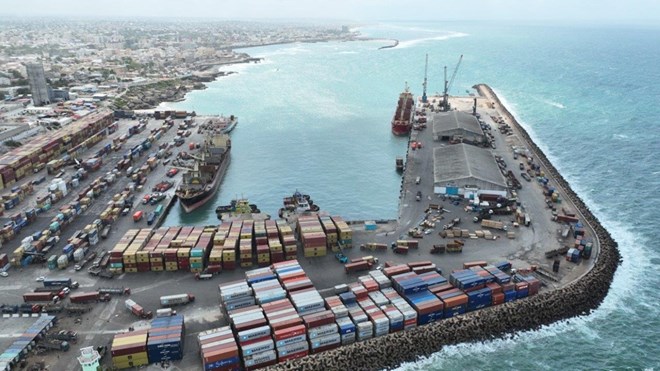Mogadishu Port, the largest seaport in Somalia, is experiencing a transformative phase as regional trade across East Africa expands.
Since August, the port administration has focused on modernizing operations, increasing capacity, and strengthening its role in regional commerce.
The Most Efficient Port in East Africa
Container Port Performance Index (CPPI) of 2024, released by the World Bank and S&P Global Market Intelligence ranked Mogadishu Port as the most efficient in East Africa.
It surpassed Mombasa, Dar es Salaam, and Djibouti.
The port also secured second place in Sub-Saharan Africa, following Dakar Port in Senegal.
Economic Recovery
Mogadishu Port is a vital economic engine, as it generates a significant share of Somalia’s federal revenue. It serves as the country’s main gateway for essential imports such as food supplies, fuel, and construction materials.
It also supports key exports including livestock and seafood.
In 2024, the port handled around1.5–2 million tons of cargo, marking consistent growth.
The new container terminal, launched in August, expanded annual capacity from 150,000 to 250,000 TEUs, enabling the port to process about 6,000 containers per month.

Strategic Expansion and Future Vision
To accommodate the surge in maritime trade, Somalia plans to build a new modern port 35 km from Mogadishu.
The proposed site will include a Special Economic Zone (SEZ), free trade area, advanced logistics hubs, and light industrial zones — transforming the nation into a regional hub for trade and manufacturing.
Connecting the Horn of Africa to Global Markets
Located along major international shipping routes, Mogadishu Port links the Horn of Africa with the Gulf region and Asia, supporting trade for landlocked neighbors like Ethiopia and South Sudan.
With ongoing investments and improved management, the port’s annual revenue is expected to reach $500 million by 2030.
This creates over 25,000 direct and indirect jobs.
The expansion of Mogadishu Port reflects Somalia’s growing stability and economic resilience.
Continuous investment in infrastructure, enhanced security, and regional cooperation are positioning the port as a cornerstone of East Africa’s trade future and a gateway for sustainable development.


